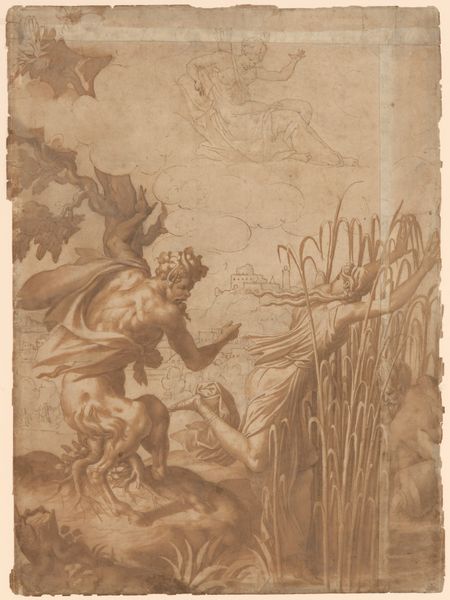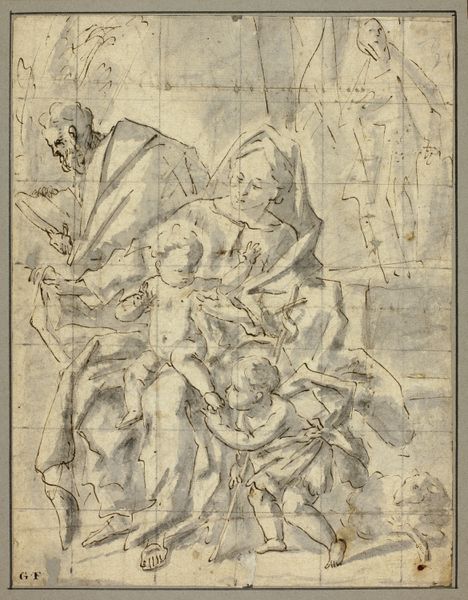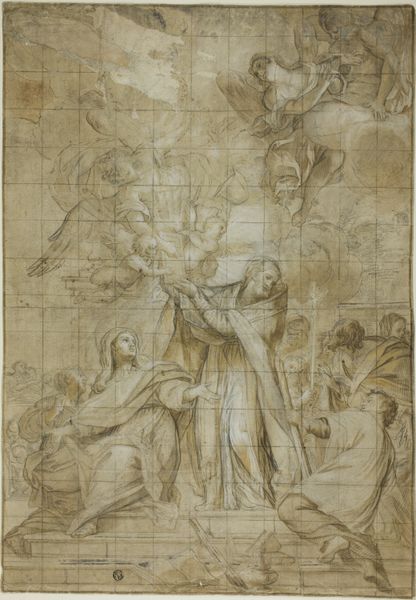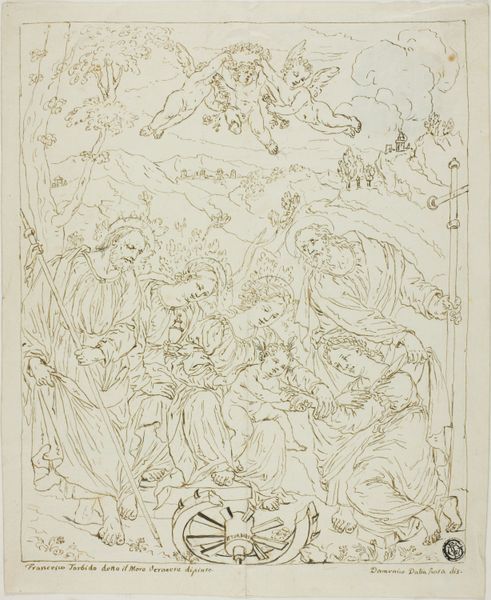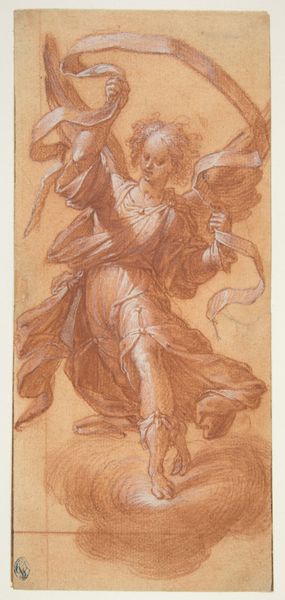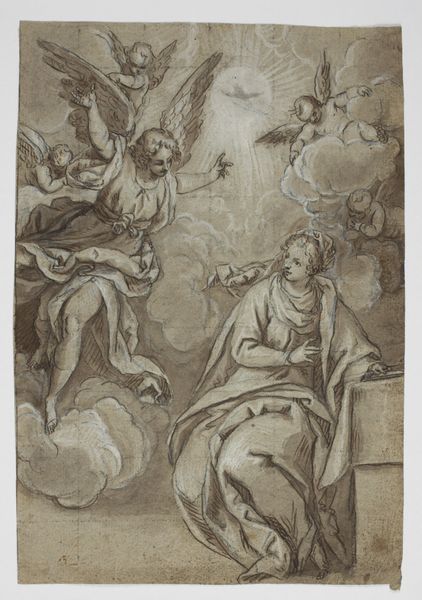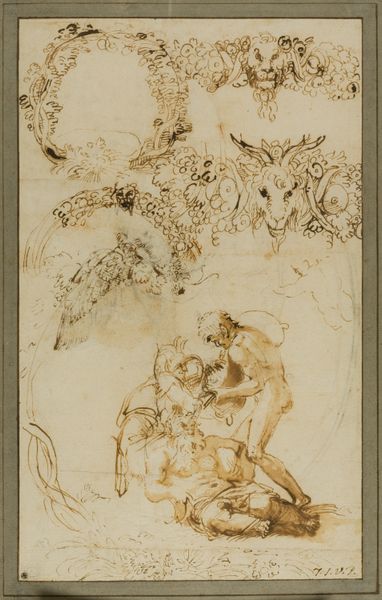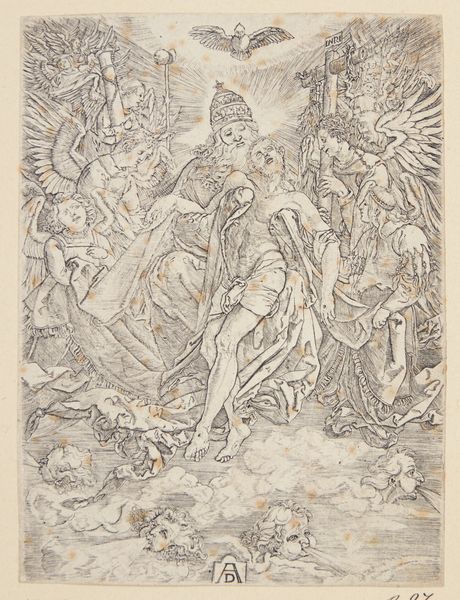
drawing, ink
#
drawing
#
narrative-art
#
baroque
#
ink painting
#
figuration
#
ink
#
history-painting
Dimensions: 10 3/8 x 6 7/8 in. (26.35 x 17.46 cm) (sheet)
Copyright: Public Domain
Curator: The drawing before us is titled "Hagar and Ishmael in the Desert" and is attributed to Domenico Piola, dating back to the 17th century. It is made with ink. Editor: The initial impression is one of great distress. There's a tangible desperation radiating from the central figure. And those muted sepia tones contribute to a feeling of parched, sun-baked earth, don't you think? Curator: Absolutely. Piola's mastery of ink allows for a dynamic interplay of light and shadow, conveying the desperation and struggle experienced by Hagar and her son Ishmael as they're cast out into the wilderness. This medium facilitates detail as well as the expressive strokes he has created here. Editor: And speaking of casting out, it's hard to ignore the narratives of displacement, of dispossession and even divine judgment—considering this episode comes directly from the Book of Genesis. Hagar, as both a woman and a slave, embodies layers of vulnerability. What does this narrative tell us about who gets to claim safety and resources? Curator: Certainly, thinking of Hagar's place in the cultural and historical narrative is valuable, but the very grid we can see under the sketch shows it as a pattern for broader use, which gives us a sense of how such images circulated through workshops as models, becoming abstracted into more generic forms detached from her personal predicament. The process suggests how this moment would be standardized through artistic labor. Editor: While that may have been the intention from Piola's perspective in his workshop, it does not take away from how the emotional power of the depiction resists that very attempt at abstraction, forcing the viewer to grapple with the raw injustice of her exile even centuries later. The image is rooted in complex histories that exceed simple production. Curator: I do agree that Piola effectively captured a moment of intense emotion using simple, available materials. It's a testament to the enduring power of drawing. Editor: And how these images shape, and sometimes distort, the lens through which we see figures like Hagar throughout history. Curator: Precisely, these insights are a perfect reminder to reflect upon artistic processes and their powerful societal implications as we leave. Editor: Indeed. The echoes of history resonate still within this ink.
Comments
No comments
Be the first to comment and join the conversation on the ultimate creative platform.


